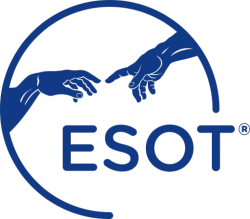International Consensus Recommendations for Anesthetic and Intensive Care Management of Lung Transplantation
An EACTAIC, SCA, ISHLT, ESOT, ESTS, and AST Approved Document
Published 26 July 2021
Nandor Marczin, MD, PhD; Eric E.C. de Waal, MD, PhD; Peter M.A. Hopkins, MD; Michael S. Mulligan, MD; Andre Simon, MD, PhD; Andrew D. Shaw, MB, FRCA, FRCPC, FFICM; Dirk Van Raemdonck, MD, PhD; Arne Neyrinck, MD, PhD; Cynthia J. Gries, MD, MSc; Lars Algotsson, MD, PhD; Laszlo Szegedi, MD, PhD; Vera von Dossow, MD
J Heart Lung Transplant. 2021 Nov; 40(11):1327-1348






For patients with end-stage lung disease, LTx remains the only therapeutic option toward better chance of survival as well as improved quality of life. The modern era of LTx is characterized by increasing complexity of recipient candidates including those receiving bridging extracorporeal support, a trend toward acceptance of suboptimal or extended criteria donors, and increasingly complicated surgical strategies. Despite these adverse conditions, contemporary survival figures for LTx continues to improve, especially considering the early period after LTx.
While these achievements are remarkable and only possible by pushing the limits of what is conceivable, the procedure remains associated with high perioperative morbidity and mortality and the lowest long-term survival of all solid organ transplants. As only a fraction of these complications can be explained by recipient and donor risk factors, there is increasing focus on adverse events and procedural influences during the perioperative period.
This endeavor has identified potentially modifiable perioperative risks that provides novel opportunities for improved anesthesia and intensive care management strategies. The analysis highlights the need for anesthesia and intensive care specialties
to foster an enhanced role in the entire process of LTx and to take clearer ownership of the total morbidity burden and failure to strive following LTx. It also calls for ongoing critical appraisal of our management goals and for constant quality
improvement to understand and exploit new strategies to reduce complications, to enhance patient's perioperative journey and to improve both short- and long-term survival of lung transplant recipients. This redefined role has major implications for
our specialties in pushing the boundaries of super specialization in transplant anesthesia and intensive care and also with regard to closer team working with the surgical and respiratory teams from the time of patient listing through the transplant
operation and postoperative ICU stay.
Related Guidlines
-
ISHLT Consensus Statement on Donor Organ Acceptability and Management in Pediatric Heart Transplantation
-
Generic Drug Immunosuppression in Thoracic Transplantation
-
Diagnosis and Management of Bronchiolitis Obliterans Syndrome
-
Destination Mechanical Circulatory Support: Proposal for Clinical Standards
-
2020 ACC/AHA Clinical Performance and Quality Measures for Adults With Heart Failure

